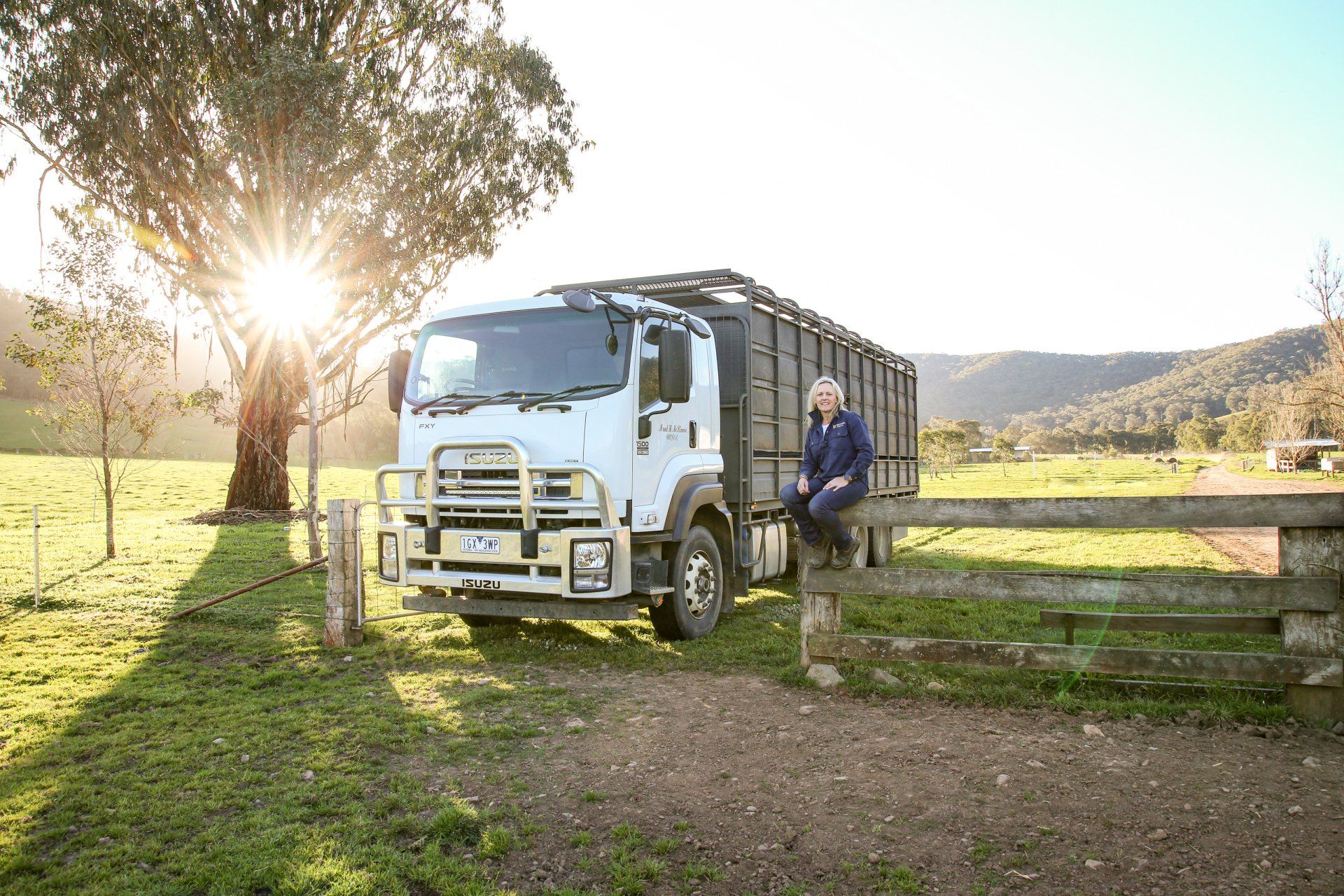1MG FlippingBooks
High country healing with Isuzu FX Series

A stone’s throw from Mount Kosciuszko, in the Biggara valley, sits the McKimmie family farm.
It’s been a tough few years for husband-and-wife team, Mal and Belinda McKimmie: a summer of tragic bushfires in 2020, loss of stock, fencing and other infrastructure, and then came the COVID-19 pandemic.
As owners of M&B McKimmie Livestock Transport, they are no strangers to moving local stock safely and quickly.
Needing a rugged, ultra-reliable truck suited to the task, they find Isuzu’s FXY 1500 (FXY 240-350 6x4) with manual transmission fits the bill, especially out on the bush tracks.
“The truck played a huge part in helping our community in Biggara following the fires— helping to transport burnt cattle and moving stock to safer areas,” said Belinda.
“But on a regular day, we can be picking up livestock in the Snowy Mountains farming district, driving long distances on back roads and then travelling to the selling yards in regional centres.”
Sitting at 24,000 kg GVM, the FXY’s generous power rating of 257 kW @ 2,000 rpm, torque of 1,422 Nm @ 1,400 rpm and simple, no-nonsense design—as well as its capability in harsh high country weather—were all appealing purchase points.
“We got the Isuzu for the power and stability going up steep hills and windy corners; the bogie axles really help with balancing the cattle and the movement on top of the tray.”
“In summer I haven’t had any overheating issues,” said Belinda.
With many of her trips involving reversing down narrow access tracks, Belinda notes the FXY’s large mirror coverage comes in handy.
“It gives me a feeling of safety and given the terrain, I’m hugely reliant on those mirrors.”
The McKimmie’s also undertook the extra expense and upkeep of installing premium rubber agri-matting into the truck’s tray for the travelling comfort of their clients’ stock—an addition that generated repeat business throughout the region.
“People love what they do and want to look after their stock. They’re really looking for that extra care.”
The McKimmies also use the truck for carting hay on the farm and taking their horses to compete in campdrafting competitions.
Despite five years of rough and dirty work, the truck has required had no downtime or repairs apart from essential servicing, and the McKimmie’s depend on Isuzu for all their aftercare needs.
“We live quite far away, but the dealership at Wodonga always provide a loan car and services the truck quickly.”
“Isuzu Trucks are built for the work we do. I couldn’t imagine looking anywhere else for my next truck purchase.”
















